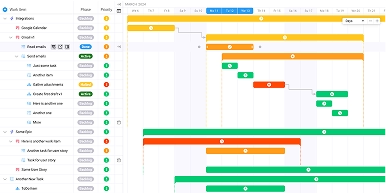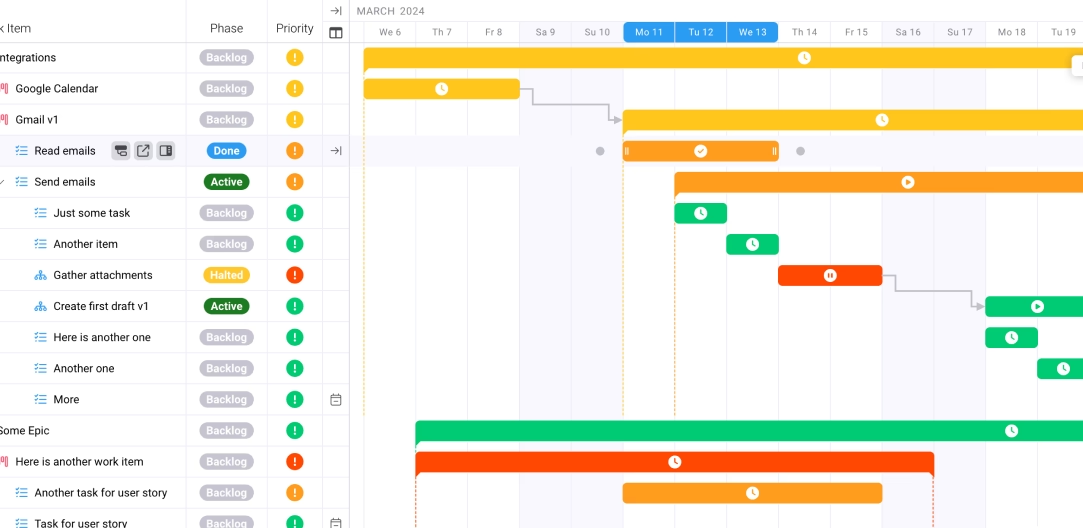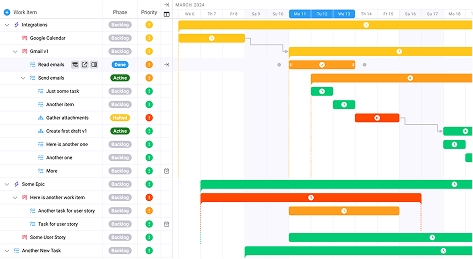
The Perfect Client Onboarding Process: Templates and Best Practices for Agencies
Key takeaways:
The moment you sign a new client should be a celebration, but for many agencies, it marks the beginning of their most critical challenge. 63% of customers consider the onboarding period when deciding to subscribe to a service or purchase a product, making client onboarding the make-or-break moment that determines whether your agency relationship thrives or fails. "The Perfect Client Onboarding Process: Templates and Best Practices for Agencies" isn't just another operational guide—it's your blueprint for transforming first-time clients into long-term partners who fuel sustainable agency growth through strategic client onboarding excellence.
The Current Challenge - What's Breaking Agency-Client Relationships
The agency landscape has become increasingly competitive, with businesses switching service providers at unprecedented rates. 74% of prospective consumers will choose alternative options if the onboarding process is difficult, highlighting how poor initial experiences directly impact client acquisition and retention. This statistic reveals a harsh reality: agencies are losing potential revenue not because of their capabilities, but because of their onboarding execution.
Acquiring new customers is up to 25 times more expensive than retaining existing ones, yet most agencies continue to invest disproportionately in acquisition while neglecting retention strategies. The financial implications are staggering when you consider that 34% of agencies report that they typically retain clients for between 2 and 5 years, while top-performing agencies achieve retention periods exceeding five years through superior onboarding processes.
The disconnect between client expectations and agency delivery creates friction that compounds over time. Modern clients expect immediate value, transparent communication, and seamless integration with their existing workflows. When agencies fail to provide structured onboarding experiences, they're essentially gambling with relationships worth hundreds of thousands of dollars in lifetime value.
Industry research reveals that agencies face three primary onboarding challenges: inconsistent processes across account managers, unclear expectation setting, and inadequate technology integration. These challenges stem from treating onboarding as an administrative task rather than a strategic revenue driver. The result is client confusion, scope creep, and ultimately, premature relationship termination.
The Client Onboarding Software Market was valued at USD 1.42 Billion in 2023 and is estimated to reach USD 6.81 Billion by 2030, indicating that businesses across industries are recognizing onboarding as a critical investment area. Agencies that continue to rely on manual, inconsistent processes will find themselves at a significant competitive disadvantage.
The Strategic Framework - Building Your Onboarding Foundation
Successful client onboarding operates on three fundamental pillars: systematic process design, stakeholder alignment, and continuous optimization. This framework transforms onboarding from a reactive checklist into a proactive relationship-building strategy that sets the foundation for long-term success.
Systematic Process Design
The most effective agencies treat onboarding as a carefully orchestrated sequence of touchpoints designed to build trust, set expectations, and demonstrate value. This systematic approach begins before the contract is signed and continues through the first 90 days of the relationship. Each touchpoint serves a specific purpose in moving the client from skeptical buyer to confident partner.
Your onboarding system should include standardized workflows that can be customized based on client size, industry, and service requirements. This balance between consistency and personalization ensures that every client receives a high-quality experience while allowing for the flexibility that modern businesses demand.
Stakeholder Alignment
Effective client communication strategies are essential for successful onboarding and ongoing project delivery. This requires identifying and engaging all relevant stakeholders on both sides of the relationship. On the client side, this includes decision-makers, day-to-day contacts, and end users who will interact with your deliverables.
Internally, successful onboarding requires coordination between sales, account management, project management, and delivery teams. Each team member must understand their role in the onboarding process and have access to relevant client information collected during the sales process.
Continuous Optimization
The best onboarding processes evolve based on client feedback, team insights, and performance metrics. This requires establishing feedback loops at key milestones and using data to identify areas for improvement. Marketing agency directors must implement structured project management practices from client onboarding through delivery to ensure consistent results.
Regular process reviews should examine completion rates, client satisfaction scores, time-to-value metrics, and team efficiency indicators. These insights drive iterative improvements that compound over time, creating a competitive advantage that's difficult for competitors to replicate.
Implementation Tactics - Your 8-Step Onboarding Methodology
The following eight-step methodology provides a practical framework for implementing world-class client onboarding. Each step includes specific actions, deliverables, and success metrics that agencies can adapt to their unique requirements.
Step 1: Pre-Onboarding Preparation
Before your new client's official start date, create a comprehensive preparation checklist that ensures smooth execution from day one. This includes setting up internal systems, preparing welcome materials, and conducting team briefings. 86% of people say they'd be more likely to stay loyal to a business that invests in onboarding content that welcomes and educates them after they've made a purchase.
Pre-onboarding activities should include account setup in your CRM system, creation of project folders, and preparation of customized welcome packets. This preparation phase demonstrates professionalism and sets the tone for the entire relationship.
Step 2: Welcome and Introduction
The welcome phase creates the critical first impression that influences client perception throughout the relationship. This includes a personalized welcome email, introduction video from the account team, and comprehensive welcome packet containing relevant templates, guides, and contact information.
Your welcome communication should reinforce the value proposition that led to the client's decision while setting clear expectations for the onboarding process. Include specific timelines, next steps, and contact information for immediate questions or concerns.
Step 3: Stakeholder Mapping and Communication Setup
Conduct a comprehensive stakeholder mapping session to identify all relevant parties on both sides of the relationship. This includes decision-makers, influencers, day-to-day contacts, and end users. Document communication preferences, availability, and escalation procedures for each stakeholder.
Establish communication protocols using your preferred tools, whether that's email, project management software, or dedicated client portals. Ensure all stakeholders have appropriate access and understand how to use these communication channels effectively.
Step 4: Discovery and Requirements Gathering
The discovery phase expands on information gathered during the sales process, diving deeper into specific requirements, constraints, and success metrics. Use structured questionnaires, stakeholder interviews, and workshop sessions to capture comprehensive requirements that will guide your strategic approach.
This phase should clarify project scope, timeline expectations, approval processes, and success metrics. Document all findings in a requirements summary that both parties review and approve before proceeding to strategy development.
Step 5: Strategy Presentation and Approval
Develop and present a comprehensive strategy document that outlines your approach, timeline, deliverables, and success metrics. This presentation should directly connect your recommended approach to the client's stated objectives and demonstrate how your strategy addresses their specific challenges.
The strategy presentation serves as a mutual commitment document that aligns expectations and provides a reference point for future discussions. Include detailed project timelines, resource allocation, and milestone definitions that will guide execution.
Step 6: Technical Setup and Integration
Complete all necessary technical setup, including access to client systems, time tracking implementation, and integration with existing client tools. This phase often involves coordination with client IT teams and may require security reviews or compliance documentation.
Technical setup should be completed before active work begins to avoid delays and frustration. Provide clients with clear instructions for any actions they need to take and offer technical support throughout the integration process.
Step 7: Team Introduction and Kickoff
Conduct a formal kickoff meeting that introduces all team members, reviews the approved strategy, and establishes working relationships. This meeting should clarify roles and responsibilities, communication protocols, and immediate next steps for both teams.
The kickoff meeting sets the collaborative tone for the relationship and provides an opportunity to address any remaining questions or concerns. Follow up with meeting notes and action items to ensure alignment and accountability.
Step 8: First Month Check-ins and Optimization
Schedule regular check-ins during the first month to assess progress, address challenges, and optimize processes based on initial experiences. These check-ins provide opportunities to demonstrate responsiveness and commitment to client success.
Great onboarding can lead to a 54% increase in engagement, making these early interactions critical for long-term relationship success. Use feedback from these sessions to refine your onboarding process for future clients.
Essential Templates for Seamless Onboarding
The right templates accelerate onboarding while ensuring consistency across all client relationships. These templates should be customizable enough to accommodate different client types while maintaining your agency's professional standards and process integrity.
Client Onboarding Checklist Template
A comprehensive checklist ensures that no critical steps are missed during the onboarding process. This master checklist should include tasks for each team member involved in onboarding, with clear deadlines and accountability assignments. The checklist serves as both a process guide and a progress tracking tool.
Your checklist should cover pre-onboarding preparation, welcome activities, discovery sessions, strategy development, technical setup, and first-month activities. Include checkboxes for task completion and space for notes about client-specific requirements or modifications.
Client Information and Requirements Template
Standardize the information gathering process with a comprehensive template that captures all relevant client details, from basic contact information to detailed project requirements. This template should build on information gathered during the sales process while diving deeper into operational details.
Include sections for stakeholder information, technical requirements, approval processes, communication preferences, and success metrics. The template should be comprehensive enough to guide strategy development while remaining user-friendly for client completion.
Welcome Packet Template
Create a professional welcome packet that introduces new clients to your agency, team, and processes. This packet should reinforce your value proposition while providing practical information that clients need to engage effectively with your services.
Include agency overview, team biographies, service descriptions, communication guidelines, and frequently asked questions. Consider creating both digital and physical versions of the welcome packet to accommodate different client preferences.
Project Kickoff Meeting Template
Develop a standardized agenda for kickoff meetings that ensures consistent coverage of critical topics while allowing for client-specific customization. This template should guide meeting facilitation while creating documentation that supports ongoing project management activities.
Include agenda items for introductions, strategy review, timeline confirmation, communication protocol establishment, and next step planning. Provide space for meeting notes and action item documentation.
Client Feedback and Check-in Templates
Create templates for regular client feedback collection that help you assess satisfaction, identify areas for improvement, and demonstrate commitment to continuous optimization. These templates should capture both quantitative ratings and qualitative feedback.
Include questions about communication effectiveness, deliverable quality, timeline adherence, and overall satisfaction. Use this feedback to optimize your onboarding process and identify opportunities for additional services.
Measuring Success - KPIs That Matter for Agency Growth
Measuring onboarding success requires tracking both leading and lagging indicators that provide insights into process effectiveness and client satisfaction. The right metrics help you optimize your approach while demonstrating the business impact of onboarding investments.
Client Satisfaction Metrics
Track client satisfaction at key milestones throughout the onboarding process using standardized surveys and feedback collection methods. Monitor Net Promoter Scores (NPS), satisfaction ratings, and qualitative feedback to assess the quality of client experiences.
Client satisfaction during onboarding strongly correlates with long-term retention and expansion opportunities. Strong onboarding can improve new hire retention by more than 80%, and similar principles apply to client relationships.
Time-to-Value Metrics
Measure how quickly clients realize value from your services by tracking time from contract signing to first deliverable, first measurable result, and full strategy implementation. These metrics help you identify process bottlenecks and optimization opportunities.
Faster time-to-value improves client satisfaction and reduces the risk of early relationship termination. Use these metrics to refine your onboarding timeline and resource allocation decisions.
Process Efficiency Indicators
Track internal efficiency metrics such as onboarding completion time, team hours invested, and error rates to assess the operational effectiveness of your process. These metrics help you optimize resource allocation and identify training needs.
Monitor the percentage of onboarding tasks completed on schedule, the number of process deviations required for each client, and team satisfaction with onboarding tools and procedures.
Revenue Impact Measurements
Connect onboarding performance to revenue outcomes by tracking client lifetime value, expansion revenue, and referral generation rates. A 5% increase in retention rates could potentially boost profits by 25% to 95%, making retention metrics particularly important for agency profitability.
Track the correlation between onboarding satisfaction scores and subsequent contract renewals, upselling success, and client referral behavior. This data helps justify onboarding investments and guide resource allocation decisions.
Competitive Advantage Metrics
Monitor how your onboarding process contributes to competitive differentiation by tracking client feedback about your onboarding experience compared to previous agency relationships. This qualitative data provides insights into your competitive positioning.
Top agencies use comprehensive client retention strategies beyond basic onboarding to maintain competitive advantages. Track how your onboarding process contributes to client loyalty and resistance to competitive pressures.
Technology Solutions for Streamlined Onboarding
Modern client onboarding requires technology solutions that automate routine tasks while maintaining the personal touch that builds strong relationships. The right technology stack improves efficiency, reduces errors, and provides data insights that support continuous optimization.
Client Portal Implementation
Implement a dedicated client portal that provides clients with 24/7 access to project information, deliverables, and communication history. This self-service capability reduces administrative burden while improving client satisfaction through increased transparency.
Your client portal should include project dashboards, file sharing capabilities, approval workflows, and communication tools. Integration with your project management system ensures that portal information remains current and accurate.
Automated Workflow Management
Deploy automated workflows that trigger specific actions based on client onboarding milestones. These workflows can automate email sequences, task assignments, document generation, and reminder notifications.
Automation reduces the risk of missed tasks while ensuring consistent execution across all client relationships. However, maintain human oversight to ensure that automated communications remain relevant and personalized.
Integration with Existing Systems
Ensure that your onboarding technology integrates seamlessly with existing systems including CRM, project management, time tracking, and billing platforms. This integration eliminates data silos and reduces manual data entry requirements.
Consider implementing an integrated work management platform like Ravetree that provides end-to-end functionality from client onboarding through project delivery and billing. This comprehensive approach ensures data consistency and process alignment across all client touchpoints.
Data Analytics and Reporting
Implement analytics tools that provide insights into onboarding performance, client behavior, and process optimization opportunities. Use this data to identify trends, predict client success, and optimize resource allocation.
Regular reporting on onboarding metrics helps teams stay accountable while providing leadership with visibility into process effectiveness and improvement opportunities.
Future Considerations - Emerging Trends and Next Steps
The client onboarding landscape continues evolving with new technologies, changing client expectations, and competitive pressures. Agencies that anticipate these trends and adapt their processes accordingly will maintain competitive advantages in an increasingly crowded marketplace.
Artificial Intelligence and Personalization
Artificial intelligence technologies are enabling more sophisticated personalization of onboarding experiences based on client characteristics, industry requirements, and historical data. These capabilities will allow agencies to provide more relevant, efficient onboarding while maintaining cost-effectiveness.
Consider how AI might enhance your onboarding through automated content recommendations, predictive analytics for client success, and intelligent task prioritization. However, maintain the human elements that build trust and demonstrate care for client relationships.
Remote and Hybrid Collaboration
The shift toward remote and hybrid work arrangements has changed client expectations for digital collaboration and communication. Your onboarding process must accommodate these preferences while maintaining the relationship-building elements that drive long-term success.
Invest in digital collaboration tools, virtual meeting capabilities, and asynchronous communication methods that support effective onboarding regardless of geographical or time zone constraints.
Industry-Specific Customization
Clients increasingly expect onboarding experiences tailored to their specific industry requirements, compliance needs, and operational constraints. Develop industry-specific onboarding variations that demonstrate deep understanding of client environments.
This specialization allows for premium pricing while reducing competitive pressure from generalist agencies. Consider how your onboarding process can showcase industry expertise and differentiate your services.
Continuous Onboarding Philosophy
The most successful agencies are moving beyond traditional onboarding time frames toward continuous onboarding that extends throughout the client relationship. This approach recognizes that client needs evolve and new stakeholders join projects over time.
Implement ongoing onboarding elements such as quarterly relationship reviews, stakeholder updates, and process optimization sessions that maintain relationship strength and identify expansion opportunities.
Implementation Roadmap for Agency Success
Transforming your client onboarding requires a systematic implementation approach that minimizes disruption while delivering measurable improvements. This roadmap provides a practical sequence for rolling out enhanced onboarding capabilities across your agency.
Phase 1: Assessment and Planning (Weeks 1-2)
Begin by conducting a comprehensive assessment of your current onboarding process, identifying gaps, and establishing baseline metrics. Document existing workflows, collect team feedback, and survey recent clients about their onboarding experiences.
Develop a detailed implementation plan that includes resource requirements, timeline estimates, and success criteria. Secure leadership commitment and budget approval for necessary technology investments and training requirements.
Phase 2: Template Development and Process Design (Weeks 3-6)
Create comprehensive onboarding templates and process documentation using the frameworks outlined in this guide. Customize these materials to reflect your agency's brand, service offerings, and client requirements.
Test your new processes with a small group of internal stakeholders to identify refinements needed before client-facing deployment. Use this testing phase to train team members and work out operational details.
Phase 3: Technology Implementation (Weeks 7-10)
Deploy necessary technology solutions including client portals, automation tools, and integration capabilities. Ensure that all systems work together seamlessly and provide adequate training for team members who will use these tools.
Conduct pilot testing with select clients to validate technology functionality and gather feedback about user experience. Use this feedback to refine system configurations before full deployment.
Phase 4: Team Training and Change Management (Weeks 11-12)
Provide comprehensive training for all team members involved in client onboarding. This includes account managers, project managers, and delivery teams who interact with clients during the onboarding process.
Address change management challenges by communicating the benefits of improved onboarding, providing adequate support during the transition, and celebrating early successes to build momentum.
Phase 5: Full Deployment and Optimization (Weeks 13+)
Roll out your enhanced onboarding process to all new clients while continuing to monitor performance and gather feedback. Use data from the first several client experiences to refine processes and address any remaining issues.
Establish regular review cycles to assess onboarding performance and identify optimization opportunities. This continuous improvement approach ensures that your onboarding process remains competitive and effective over time.
Conclusion
Mastering "The Perfect Client Onboarding Process: Templates and Best Practices for Agencies" transforms your agency's approach from reactive relationship management to proactive partnership building. The comprehensive framework, proven templates, and strategic insights outlined here provide everything needed to implement client onboarding processes that drive sustainable growth. When executed consistently, these onboarding best practices become your agency's competitive advantage, converting one-time clients into long-term partners who fuel business expansion through retention, referrals, and revenue growth.
Frequently Asked Questions
How long should the agency client onboarding process take?
Most effective agency onboarding processes span 30-90 days, with core activities completed in the first 30 days and ongoing optimization continuing through the first quarter of the relationship.
What are the most important onboarding templates for agencies?
Essential templates include client information gathering forms, welcome packet materials, project kickoff meeting agendas, stakeholder mapping worksheets, and feedback collection surveys.
How can agencies measure onboarding success?
Key metrics include client satisfaction scores, time-to-first-value delivery, onboarding completion rates, early retention indicators, and revenue impact measurements.
What technology tools are essential for client onboarding?
Core technology includes CRM systems, project management platforms, client portals, automated workflow tools, and communication platforms that integrate with existing agency systems.
How often should agencies update their onboarding processes?
Review and optimize onboarding processes quarterly based on client feedback, team insights, and performance metrics, with major updates annually to incorporate industry trends and technology advances.
What's the biggest mistake agencies make during client onboarding?
The most common mistake is treating onboarding as an administrative task rather than a strategic relationship-building opportunity, leading to missed expectations and weak client engagement.
How can small agencies compete with larger firms in onboarding?
Small agencies can excel through personalized attention, faster response times, and customized onboarding experiences that larger firms struggle to provide at scale.
Should agencies use automated or manual onboarding processes?
The most effective approach combines automation for routine tasks and consistency with manual, personalized elements for relationship building and complex requirements.









